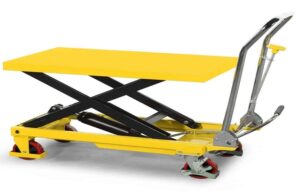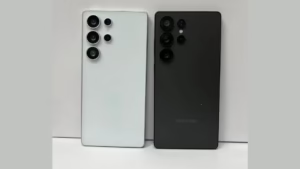Predicting Hardware Compatibility for Spinal Disc Patients Using AI
Selecting the right spinal hardware for disc replacement is a complex, highly individualized process. Each patient’s spinal structure, disc degeneration pattern, bone density and lifestyle habits can influence how well an implant performs in the long run. A mismatch between hardware and anatomy can lead to discomfort, reduced mobility or the need for revision surgery. Dr. Larry Davidson, an experienced specialist in spinal care, recognizes that AI’s role in this process is becoming essential for improving long-term outcomes and personalizing treatment for every patient.
AI-powered systems can assess a wide array of factors, from preoperative imaging and medical history to predicted biomechanical loads, offering precise guidance on which hardware will best suit the patient’s unique anatomy and health profile. By moving beyond trial and error and toward data-backed prediction, AI is reshaping the way disc replacement procedures are planned and executed.
The Complexity of Hardware Selection in Spinal Disc Surgery
Spinal disc implants come in various shapes, materials, sizes and mechanical designs. Factors such as cervical vs. lumbar location, spinal curvature and surrounding joint integrity all influence how the implant will interact with the body. For instance, an implant that works well in a tall, active patient with strong bone density may not perform as effectively in someone with osteoporosis or scoliosis.
Traditionally, selecting hardware has relied on imaging, general guidelines and surgical intuition. While experienced surgeons have developed reliable instincts, the sheer number of variables makes it difficult to ensure a perfect fit for every patient, especially in complex or borderline cases.
How AI Analyzes Patient Data for Compatibility
AI models are trained on vast datasets consisting of surgical outcomes, patient demographics, imaging data and implant performance records. These tools can analyze and cross-reference the data to determine which combinations of patient traits and implant types have yielded the best long-term results.
Before surgery, the AI system reviews the patient’s:
- MRI and CT scan data
- Spinal alignment and disc height
- Bone density and mineral composition
- Activity level and mobility goals
- History of spine conditions or surgeries
The model then ranks compatible hardware options based on biomechanical suitability, projected durability and alignment with the patient’s anatomical profile.
Matching Biomechanics with Implant Design
Each spinal disc implant has its own mechanical properties, including degrees of mobility, shock absorption capacity and how it distributes stress across the vertebrae. AI systems can simulate how different implant designs would perform inside a specific patient’s spine based on their posture, muscle tension and spinal flexibility.
For example, a patient who demonstrates significant vertebral tilt or asymmetrical disc wear might require an implant with lateral stabilization features. Someone with reduced disc space may benefit more from an implant that maximizes height restoration, while reducing pressure on surrounding tissues.
These insights help surgeons avoid complications like implant migration, subsidence or adjacent segment degeneration.
Predicting Long-Term Hardware Performance
Beyond immediate compatibility, AI can predict how an implant will perform for years. By analyzing historical cases with similar patient profiles, AI tools can forecast:
- The likelihood of hardware failure or loosening
- The probability of needing revision surgery
- The risk of bone-implant interface issues
- How wear patterns may evolve over time
This long-range forecasting helps patients and surgeons set realistic expectations and make better-informed decisions,especially when weighing between competing hardware options.
Dr. Larry Davidson explains, “AI will enable us to quickly review and summarize existing medical literature regarding specific types of patients with unique medical conditions and their outcomes following certain spinal surgical procedures.” By leveraging this clinical evidence, AI tools can place implant performance in the context of similar patient cases, providing insights that enhance and support the surgeon’s planning process.
Supporting Custom Implant Design
In some cases, standard hardware may not be a perfect match. AI can support the development of custom or semi-custom implants through collaboration with 3D printing technologies. Based on the patient’s spinal scans and movement patterns, the system can help engineers design implants that are uniquely tailored in size, angle and material density.
These custom solutions are especially helpful for patients with abnormal spinal curvatures, congenital anomalies or a history of failed implants. The result is a more secure fit, smoother recovery and better long-term alignment.
Improving Surgical Precision and Confidence
When surgeons enter the operating room with AI-guided implant recommendations, they’re equipped with a higher degree of certainty. The preselected hardware is more likely to fit properly, integrate well with the surrounding anatomy and align with the patient’s movement patterns.
Intraoperative imaging can further validate these predictions, ensuring that the hardware placement matches the pre-surgical model. This added layer of precision reduces intraoperative adjustments, shortens surgery time and minimizes the risk of complications.
Empowering Shared Decision-Making with Patients
AI’s role in hardware compatibility isn’t limited to the clinical side; it also supports more transparent communication with patients. When patients are presented with compatibility scores, visual simulations and clear explanations of why a specific implant is being recommended, they feel more involved and reassured.
When patients feel empowered, they’re more likely to stick to their care plans, feel confident in their recovery, and trust the journey they’re on with their surgical team. It also helps manage expectations about the performance, recovery and long-term durability of the implant.
Ethical Considerations and Oversight
As with any AI application in medicine, it’s critical to ensure that models are validated across diverse patient populations and are free from bias. Compatibility predictions should be interpreted in context, not as absolute truths, but as valuable insights to support clinical judgment.
Surgeons must remain the final decision-makers, weighing AI recommendations against hands-on experience, intraoperative findings and the patient’s expressed goals. Transparency about how the AI model works and what data it uses also builds patient trust.
The Future of Compatibility Prediction
As AI systems continue to evolve, we can expect even more sophisticated compatibility modeling. Future tools may integrate motion capture data, genetic markers or even real-time muscle engagement readings to predict how implants will behave under specific movement loads.
Combined with robotic assistance and augmented reality surgical planning, hardware selection will soon become a highly precise, interactive process, customized not just to the spine but also to the individual’s lifestyle and long-term health goals.
A Smarter Fit for a Stronger Recovery
Matching spinal hardware to each patient’s unique anatomy is one of the most important decisions in disc replacement surgery. AI helps bring greater clarity to that process by highlighting which implants are most likely to align with a patient’s structural and functional needs.
Rather than relying solely on generalized guidelines, surgeons can now use compatibility insights drawn from imaging, patient history and modeled performance data. As these tools continue to evolve, hardware selection is becoming more personalized, more precise and better positioned to support long-term recovery and mobility.














Post Comment
You must be logged in to post a comment.